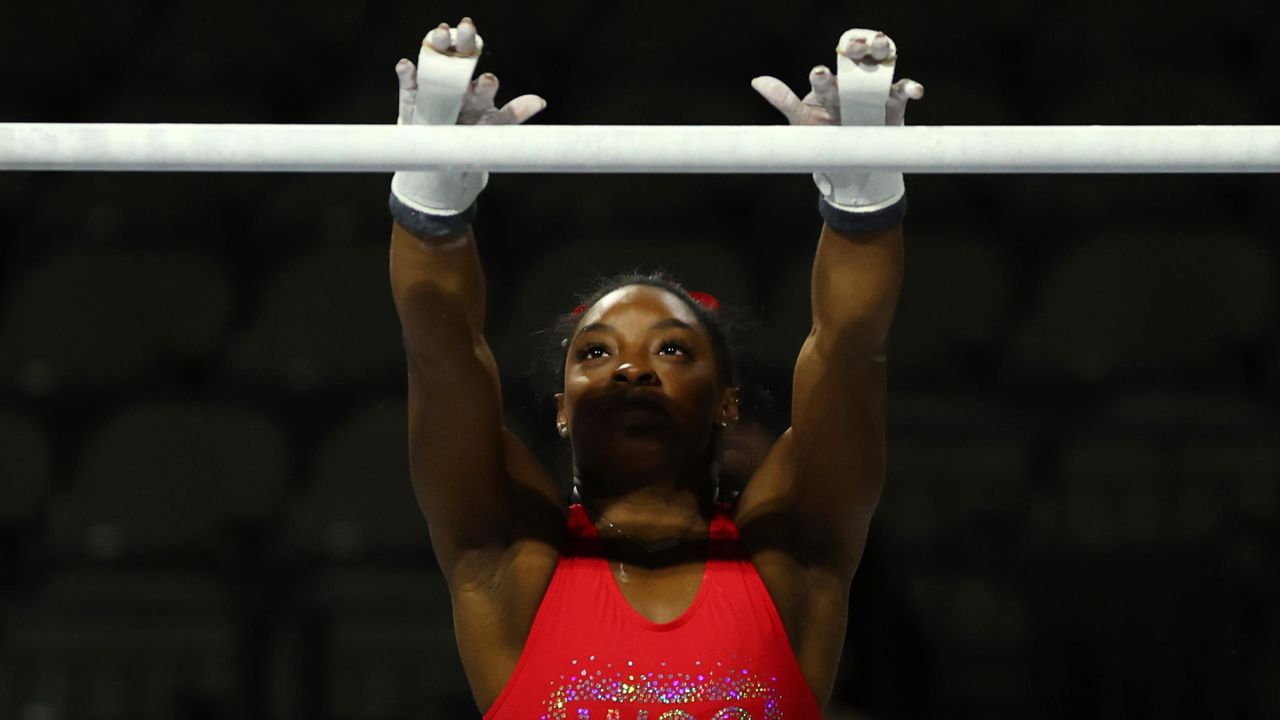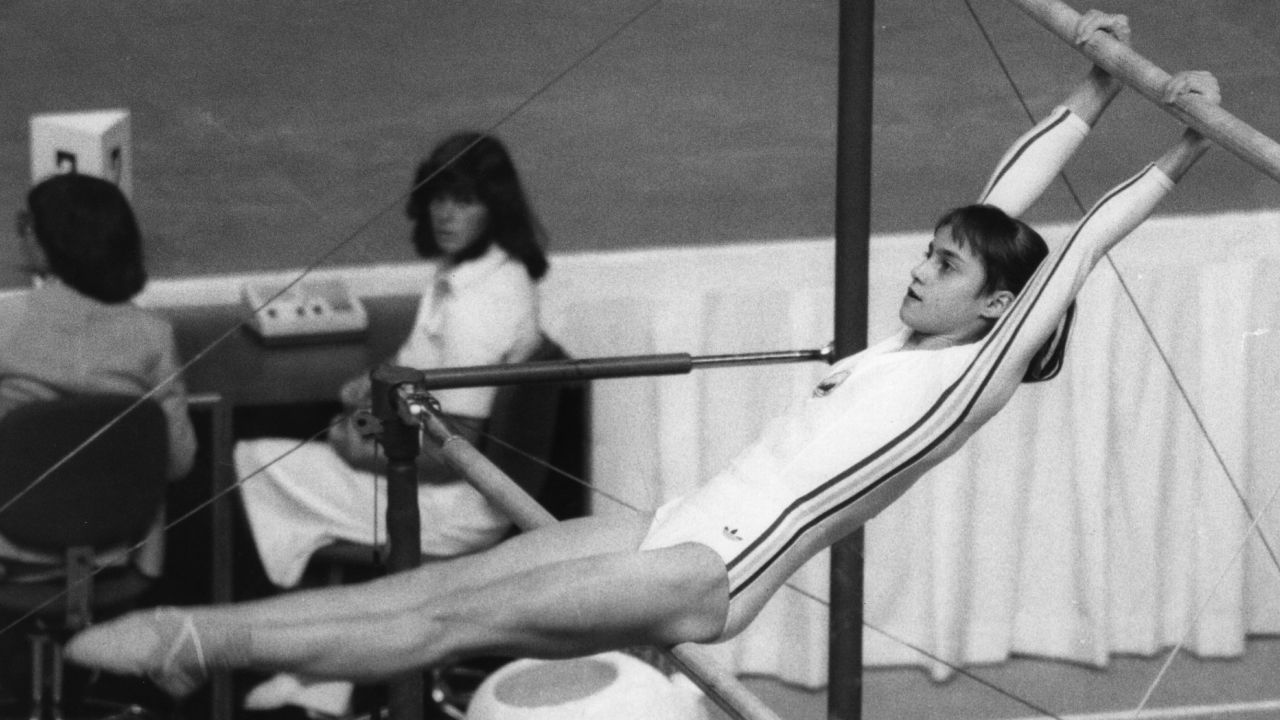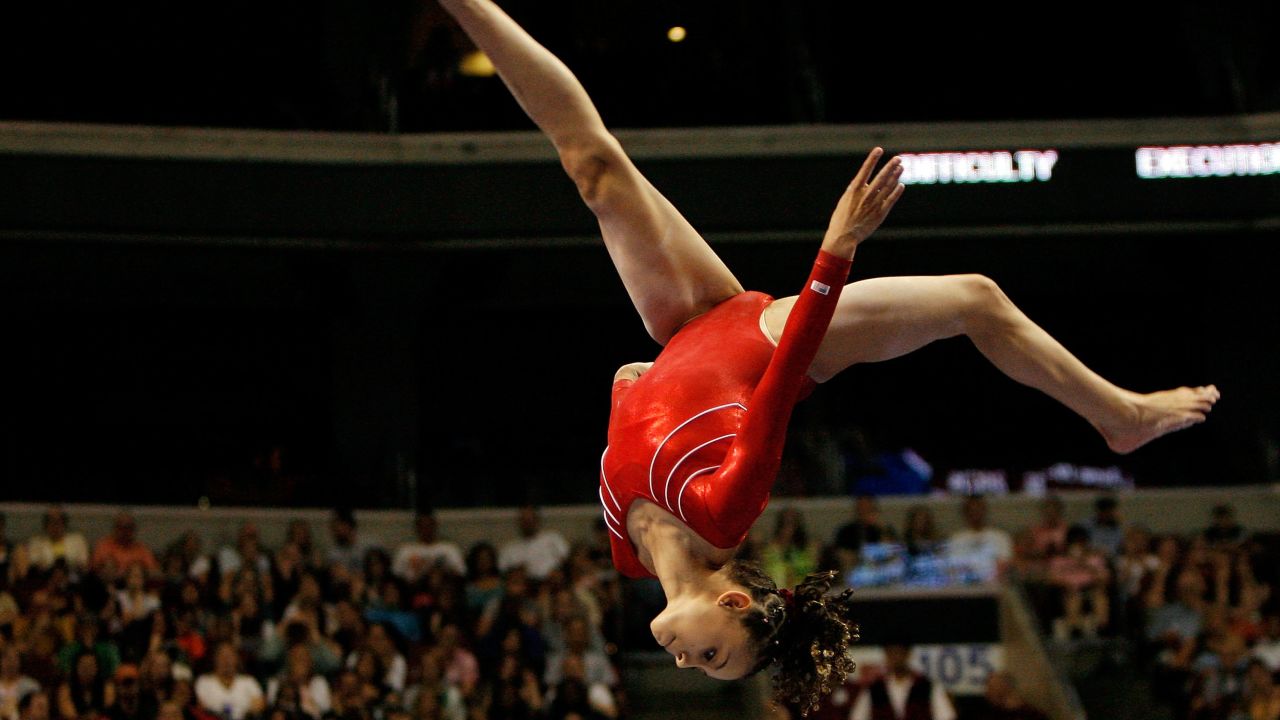 Stacy Revere/Getty Images
Stacy Revere/Getty Images
Simone Biles, a famous gymnast, will compete for the first time since she got “the twisties” and had to drop out of several events at the Tokyo Olympics in July 2021. She will do so this weekend at the US Classic.
She didn’t tell anyone about her plans until a few weeks ago, and now she says she can twist just fine. Scores from a national training camp that wasn’t shown on TV show that she might return to her record-breaking best. She might even be able to do the Yurchenko double-pike vault, which no other woman has ever done.
On top of that, there’s another reason to be excited: Biles’s return proves that gymnastics’ old culture, which sometimes treated athletes like children in cruel and strange ways, may be dead.
People might say that Biles is “old” for her sport at 26. Many have said that female gymnasts are usually teenagers whose careers don’t last long. But less is said about why.
“To do gymnastics, you need to be strong for your weight,” said Jessica O’Beirne, who has been running the GymCastic podcast for a long time. “Right now, it’s all about strength and power, especially power. You can’t do the required gymnastics without power.”
In the bad old days, weight was the most important thing. Coaches told athletes to eat less so they would weigh less, and being thin often meant that a person was still a child. The best proof that a small body like a child’s was the ideal is the TV commentary of old competitions. Gymnastics fans now pass around clips of the worst examples with strange pride.
One sports documentary about Nadia Comaneci and her coach said, “She would prove Bela Karolyi’s theory that waiting until after puberty was wasting the best years of their lives.”
When she was only 14, Comaneci got a perfect score of 10 at the Olympics in 1976. This made the whole world take notice. At the 1980 Olympics, when she was taller and looked more like a young woman than a girl, people worried she was too old for the sport.
 Frank Barratt/Hulton Archive/Getty Images
Frank Barratt/Hulton Archive/Getty Images
In 1991, a commentator said this about Svetlana Boginskaya: “She’d put on some weight before the European championships. She still won the competition, though, which shows how strong she is. And now she’s back in top shape and even skinnier than before.”
In 1994, a TV commentator gave an awkward defense of Tatiana Lysenko, who had just won the Olympic beam title. “Many people who see her will probably think, ‘Oh, she’s a big girl!’ But she’s not. She’s a very, very fit young woman. It’s hard to tell how big these gymnasts are when you watch them on TV.”
The pressure to stay thin is harmful and unhealthy and doesn’t work in the long run. It puts athletes at risk for the female athlete triad, which means they don’t get their period (or get it irregularly), have less energy, and have less bone density. That can cause stress fractures and other serious injuries.
Jennifer Sey, the 1986 national champion, has said that she lived on apples and lettuce and that her coach yelled, “I don’t coach fat gymnasts!” She told CNN that she played for two years with a broken ankle.
 Nick Laham/Getty Images
Nick Laham/Getty Images
World silver medalist Mattie Larson told me that she once competed after eating only two triangles of a Toblerone that day. “I was exhausted. Larson said, “At the end of practice, I always felt like I was going to pass out.” “I started taking so many laxatives every day when I was 15 or 16. It was crazy because I didn’t practice gymnastics. It was like, “Don’t crap your pants in your leotard.”
Larson was hurt in a lot of ways. She said that her feet were badly hurt at a national training camp. Larson said, “I had to spend the rest of camp on my hands and knees.”
O’Beirne said on his podcast that some coaches have learned from their mistakes. “One of the most important things that has changed is that people now know how important nutrition is. “If you don’t eat right and don’t get your period early enough, you will break your bones all the time and won’t be able to handle what it takes to return from multiple Olympics,” she said. “The athletes who have done the best are the ones who reached adulthood sooner.” Biles is only 4’8″, but she is a grown-up.
Now, gymnasts in many places lift weights. Ellie Black, a Canadian gymnast, puts videos of herself “turning on beast mode” on Instagram. O’Beirne says that Black’s weight training is why she has lived so long.
Black is 27 years old. He has attended three Olympics and won two medals at the world championships last year. Jade Carey, who won an Olympic gold medal and three medals at the world championships last year, is 23. Jordan Chiles, who won three medals at the world championships last year, is 22.
Like Biles, Carey and Chiles can jump higher and farther from the vault to get a good score for execution and do more twists to get a better score for difficulty. On the other hand, Chinese women gymnasts, who tend to be less muscular, haven’t won a world championship or Olympic vault medal in over a decade.
O’Beirne said that some sports officials still worry about how skinny gymnasts are. She said that a USA Gymnastics official talked about an up-and-coming gymnast and said she had “the international look,” which has been a code word for thin for years. O’Beirne said, “I laughed out loud because I thought he was joking.” “It never occurred to him that this was a bad sentence.”
She said that gymnasts now see much more of the outside world. “College athletes’ pride in their bodies is something we didn’t see before,” she said. “Social media helped them because they were like, ‘Oh, I’m so hot. I’m going to post a bunch of pictures of my butt because I worked hard for it, and it looks great.'” On the one hand, yes, male gaze, etc. But back in the day, people who looked like that would have been called fat and kicked off a team. And they don’t now.”
 Stacy Revere/Getty Images
Stacy Revere/Getty Images Frank Barratt/Hulton Archive/Getty Images
Frank Barratt/Hulton Archive/Getty Images Nick Laham/Getty Images
Nick Laham/Getty Images